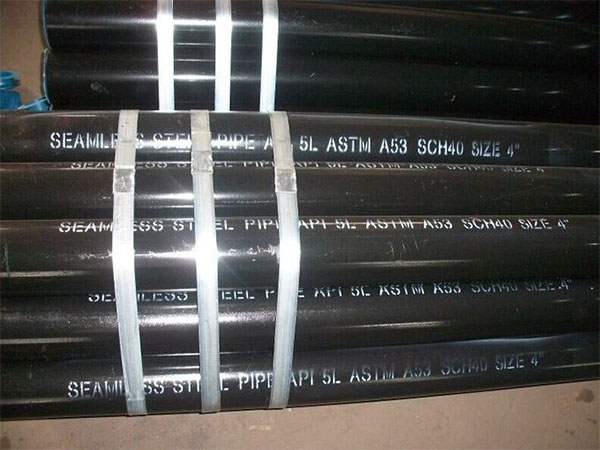ASTM A53 is a carbon steel standard for mechanical, pressure and structural applications, applicable to steam, water, gas and air conveying systems, and is also often used in structural applications. It mainly includes three manufacturing methods:
Type F: continuous Furnace welding (Furnace - butt welding)
Type E: Electric Resistance Welded (ERW)
Type S: Seamless pipe
Each manufacturing method can correspond to
Grade A or
Grade B, but when Grade B is manufactured using Type F, relevant requirements such as heat treatment must be met.

Differences in chemical composition
The main difference in chemical composition between the two lies in the limits of carbon and manganese:
Grade A (max) :
Carbon: 0.25% (Type E/S) / 0.30% (Type F); Manganese: 0.95% / 1.20% (F).
Grade B (max) :
Carbon: 0.30% Manganese: 1.20%.
The carbon and manganese content of Grade B is higher than that of Grade A, thus it has greater strength and hardness.
Comparison of mechanical properties
Grade A:
Minimum yield strength: approximately 30 000 psi (206 MPa)
Minimum tensile strength: approximately 48 000 psi (331 MPa)
Grade B:
Minimum yield strength: approximately 35 000 psi (241 MPa)
Minimum tensile strength: approximately 60 000 psi (414-415 MPa)
Therefore, Grade B is significantly stronger than Grade A and is more suitable for pressure environments.
Application comparison and suggestions
Typical application suggestions
Grade A (Type E or Type S) :
Lower strength and lower cost; Suitable for low-pressure or structural applications, such as water, gas, low-pressure steam pipelines, and support structures; Type F (Grade A) is common for small diameters, but it has a relatively high risk in quality control and is not recommended for demanding applications. Type F does not support Grade B and is therefore limited to scenarios of Grade A.
Grade B (Type E or Type S, excluding Type F) :
Higher strength and stronger pressure resistance capacity; It is applicable to medium and high-pressure systems, such as industrial steam, natural gas, and high-temperature medium pipelines. Grade B of Type E or S is more symbolic and standardized, and is a common choice for engineers.
Testing and manufacturing requirements
Grade B resistance welded (Type E) tubes must undergo heat treatment (minimum approximately 540 °C) after welding to prevent the formation of untempered martensite and ensure stable performance.
Manufacturing and quality inspection usually include: tensile test, flatness test, bending/cold bending test (by specification), and hydrostatic test. Transverse weld test is also required when ERW size ≥ NPS 8.
Summary and suggestions
If the project has high requirements for pressure, temperature and mechanical strength, Grade B (Type E or Type S) should be given priority.
If it is only for structural support or low-pressure transportation and cost is sensitive, Grade A can be considered (Type E or S is preferred, Type F is not recommended).
Please ensure that the specifications are clearly marked during the design process: particularly specify Grade and Type (E/S/F) to avoid confusion. At the same time, confirm whether they comply with the requirements of engineering pipeline standards (such as B31.1 / B31.3).
Read more:A53 ERW carbon steel pipe
